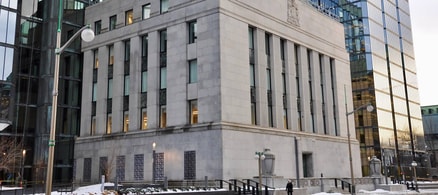The impact of the overnight rate
The overnight rate, also called the key lending rate, is a tool used by the Bank of Canada to maintain stability in the country’s financial system. Simply put, it’s the interest rate banks pay when borrowing money from each other for very short periods of time.
The overnight rate is also used to determine banks’ prime rates, or the interest rates they offer their most valuable customers. When the Bank of Canada’s overnight rate rises, banks' prime rates typically increase by a similar, if not identical, amount.
Variable interest rates are based on a lender’s prime rate. When you see “prime plus two per cent” or “prime plus four per cent,” for example, you’re looking at the variable rate equation for a particular loan product. Whenever the prime rate increases, variable interest rates do, too.
Think of it as a domino effect. An overnight rate increase means higher prime rates. Higher prime rates result in higher variable rates. Higher variable rates drive up the cost of certain debts.
Credit that will cost you more
If your debts are all of the fixed-rate variety, the Bank of Canada’s rate hikes won’t affect you in the short term.
But if you’ve chosen a variable-rate option for one of the following products, expect your interest costs to rise — possibly several times — this year.
- Credit cards. Most credit cards in Canada have fixed interest rates, but some marketed as “low interest rate” cards do carry variable rates. If you’re not sure which kind of rate is associated with your card, it’s worth double-checking.
- Car loans. Lenders often offer a fixed rate for the first year or two of a car loan and then switch it to a variable rate for the remainder of the loan term.
- Personal loans. Similar to mortgage borrowers, personal loan holders sometimes opt for lower variable rates even though they come with the risk of rate increases.
- Student loans. While the interest payable on Canada Student Loans has been frozen until March 31, 2023, student loan interest typically has a variable rate component, as the prime rate is used for the federal portion of Canada Student Loans.
- HELOCs. Home equity lines of credit are variable, normally laid out like the “prime plus” example we used above. Not only can the prime rate change, but your lender can tweak the formula to calculate your interest rate whenever they see fit.
- Mortgages. When the Bank of Canada raises its overnight rate, variable-rate mortgage borrowers will feel it the most.
Target your high-interest debts
Zeroing out your variable rate credit balances won’t be possible in every instance. Paying off a mortgage, car loan or personal loan ahead of schedule may trigger early repayment fees. (Read those loan agreements very carefully, folks.) In the case of mortgages, early repayment fees can cost homeowners up to tens of thousands of dollars.
But if you have the ability to pay down a loan or credit card balance in the coming months — maybe you have some Christmas cash to spend or are planning on getting your tax refund early —do it, and save yourself the added interest costs.
If you’re only able to pay down one of your balances, you’ll save the most money by targeting the one with the highest interest rate. If the rate on your HELOC rises from six per cent to 6.25 per cent — the Bank of Canada typically moves its rate in 25-basis point increments — that might be a little easier to swallow than having to pay an extra 0.25 per cent on a variable-rate credit card that’s already charging you 18 per cent.
Just how high interest rates will rise this year is still unknown, but we know they will be heading up. Get out ahead of the trend while you can.





